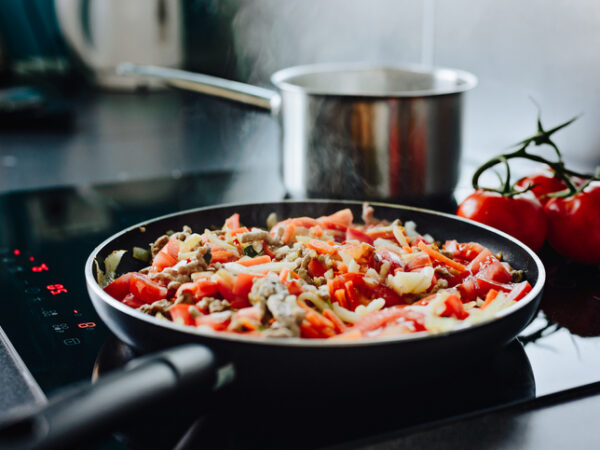Spring weather has many people thinking about planting a garden, visiting the farmer’s market and enjoying more fresh fruits and vegetables. Eating a healthy diet on a budget may seem difficult with the price of salmon and avocados, nuts and berries. But with a few strategies, seniors on a fixed income can shop for healthy, nutritious and affordable groceries.
Start by asking about loyalty or discount store cards and use coupon or sales to stock up on staples. Store brands are often less expensive than brand names but avoid prepared foods, even bagged salads, that are expensive and may not last as long. Less red meat, snacks items and sweets will not only improve your health (and your waistline) but can also save you money. Choose real food instead of spending money on processed items with empty calories. Individuals states and provinces may have also programs to help provide seniors with fresh food or food delivery services.
After the age of 50, its even more important to eat a healthy diet to strengthen our immune system, manage weight and help prevent chronic health conditions, falls and illness.
Fruits and vegetables that are more wallet friendly include bananas, apples, oranges, cabbage, sweet potatoes, dark-green leafy vegetables, green peppers and carrots (not baby). To help lower blood pressure, the DASH diet plan is recommended by the National Institute on Aging. The plan focuses on whole grains, fruits, vegetables, low fat daily, seafood, poultry, beans, seeds and nuts while avoiding added sugar, fats, red meat and excess sodium. Simple swaps like substituting fried chicken wings (479 calories) for a roasted skinless chicken breast (141 calories) can save fat and calories while cutting costs.
By buying sale items in bulk and dividing them into smaller portions to be frozen, older adults can waste less and save money while still enjoying their favorite foods. Meal planning is the best way to stick to a grocery budget, keep food interesting and eat a healthy diet. Try to include a good variety of foods to get all the nutrients your body needs and don’t forget to drink at least 8 glasses of water each day.
Recommended vitamin and mineral rich foods for older adults:
- Vitamin B12—2.4 micrograms/day. Foods high in B12 include fish, shellfish, lean red meat, low-fat dairy, cheese, and eggs.
- Folate/Folic acid—400 μg/day. Foods high in folate include dark leafy greens, asparagus, broccoli, citrus fruits, beans, seeds, and nuts.
- Calcium—1,200 mg/day. Foods high in calcium include low-fat milk, kale, sardines, broccoli, yogurt, and cheese.
- Vitamin D—800-2,000 IU/day depending on sun exposure and health conditions. Sources of high Vitamin D include fish, shellfish, low-fat milk, orange juice, and the sun.
- Potassium—4,700 mg/day. Foods high in potassium include avocado, spinach, sweet potato, yogurt, coconut water, and white beans.
- Magnesium—400 mg/day. Foods high in magnesium include dark leafy greens, seeds and nuts, fish, beans and lentils, and brown rice.
- Fiber—30 grams for men and 21 grams for women. Great sources of fiber include avocados, raspberries, blackberries, artichokes, peas, beans, lentils, nuts, and seeds.
- Omega-3 Fats—500 mg/day. Foods high in Omega-3 fats are flaxseed oil, fish and fish oils, nuts, shellfish, soybeans, and spinach.
Source: National Council on Aging






Add Your Voice
0 Comments
Join the Discussion